Woottens, in the flat lands of Suffolk at Wenhaston, five miles from the sea, was founded in 1990 by Michael Loftus, who was much admired as a plantsman. In 2016, four years after he died, his widow sold the nursery to two women who, from working with Loftus, had absorbed much of his knowledge, and shared his particular interest in irises, pelargoniums, hemerocallis and auriculas.
Auriculas are fussy, and for these they have some help from Gillian’s partner Jenny Stafford – in the past, the propagation was done by Sandra Sutton, who bred more than 30 of Woottens’ own hybrids. After the polytunnel collapsed during a storm in 2018, it had to be reclad and it took a couple of seasons to rebuild the collection. In 2020, however, they bought the Drointon collection of 2,000 show auriculas, and now Woottens is one of the best places to buy auriculas.
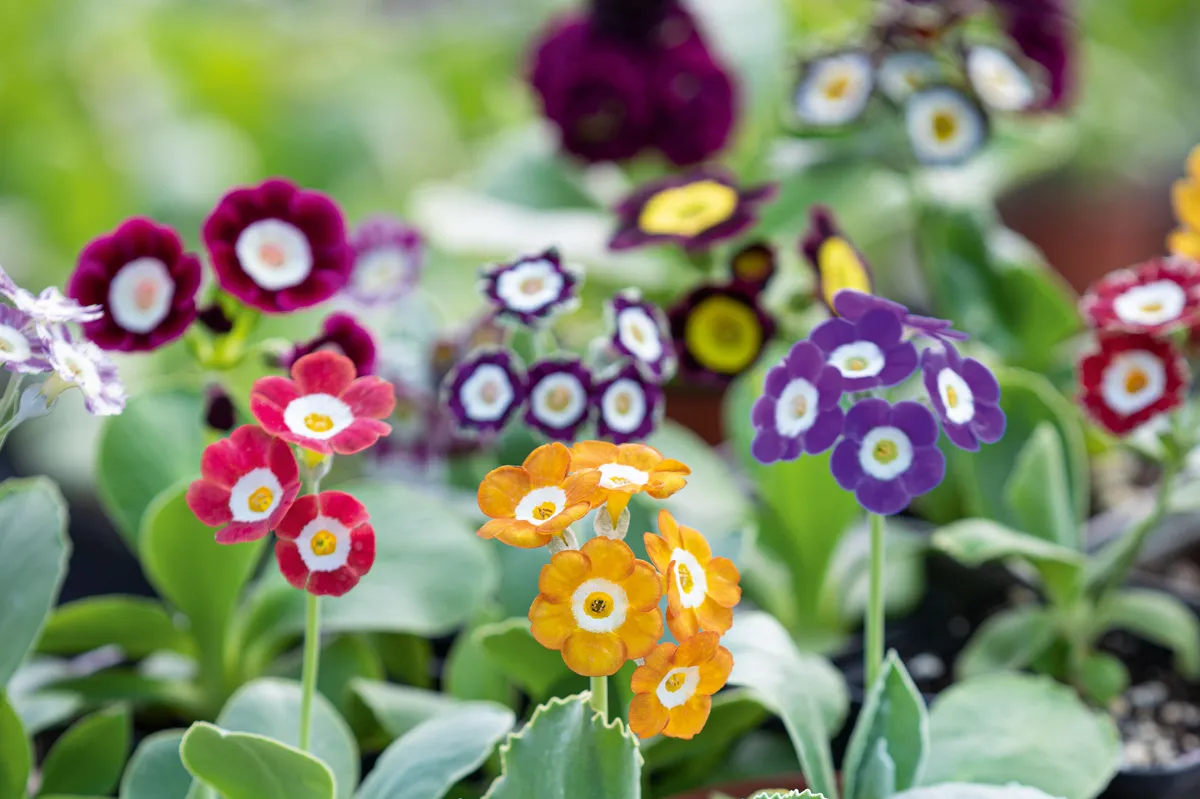
What are auriculas?
In the 18th and 19th centuries, auriculas were among the most popular plants collected by members of the English Florists’ Societies, and they remain popular with collectors to this day. Although the alpine auriculas are generally robust enough to grow in borders, Luci and Gillian believe both show and alpine auricula types are best grown in individual pots, and perhaps displayed in a traditional Auricula Theatre, where the vast array of different flowers in wonderful colours can be fully appreciated.
Jump to
- How to grow auriculas
- Dividing auriculas
- Feeding auriculas
- Where to grow auriculas
- Where to buy auriculas
- How to propagate auricuas
- Top 16 auriculas to grow
How to grow auriculas
Root aphids have recently been a nuisance to growers of auriculas, so I wanted to learn how they manage their plants. Gillian says these picky alpines hate being too wet, but they also don’t like being too dry in summer, because root aphids thrive in dry conditions.
Dividing auriculas
Many growers divide their plants after flowering, but life on the nursery is too busy, so their plants are usually divided in July to August. When root aphids strike, it involves removing all the compost and then washing the roots with horticultural soap.
Feeding auriculas
The plants get a root feed high in phosphorous and very low in nitrogen in early February, and a potassium feed to encourage flowers a fortnight later and then every two weeks. Woottens use a compost that is 50 per cent peat substitute, 25 per cent grit or perlite and 25 per cent loam, such as John Innes, with some added slow-release fertiliser.
Where to grow auriculas
Auriculas grow in the crevices of rocks, so they do not like being overpotted. Ideally, they should be in a shady east-facing site, with protection from wet in winter.
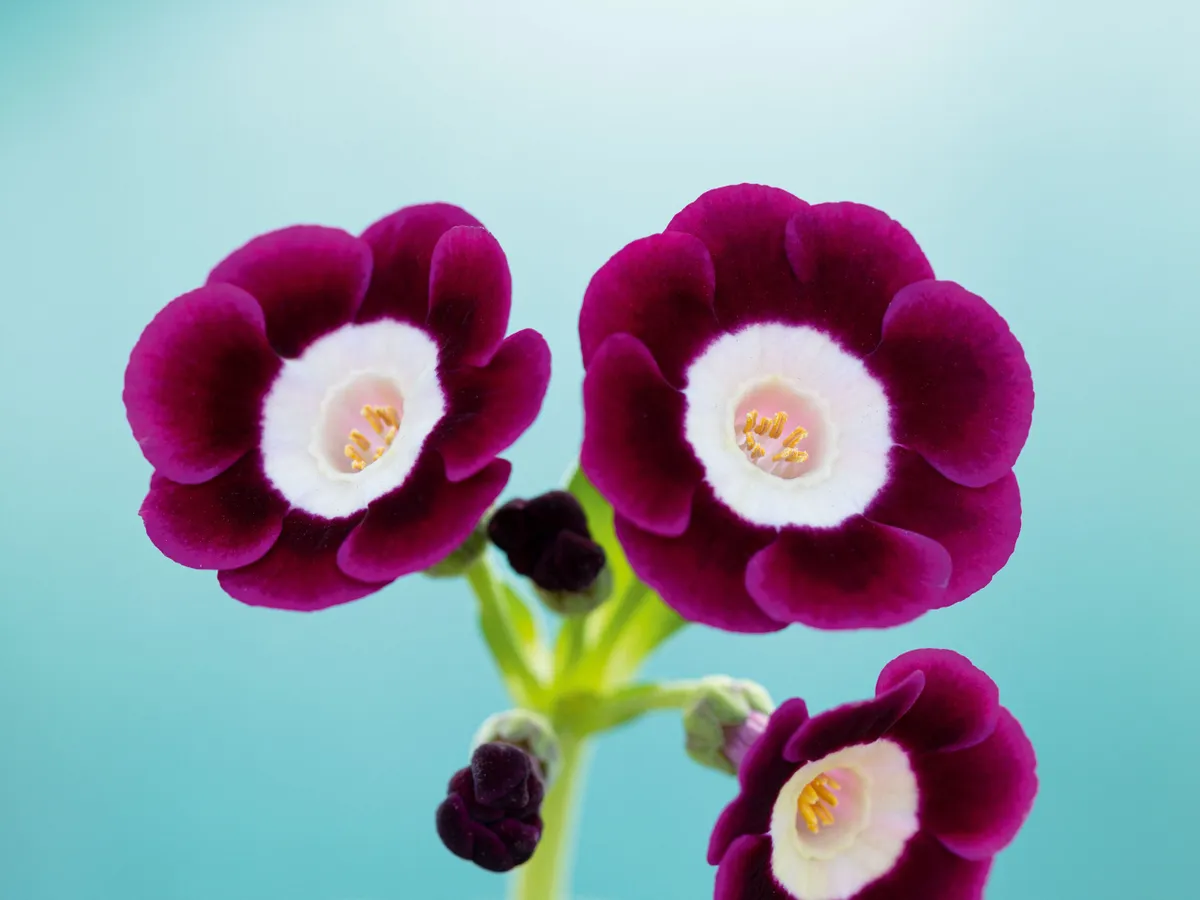
Where to buy auriculas
If you are tempted to start your own auricula collection, look out for Woottens’ availability list, which is usually published on its website in February. You can order as soon as the list is published, for dispatch in March, but be quick, as this early release attracts lots of collectors and enthusiasts – last year’s list sold out within a week. Most years Woottens also holds an Auricula Open Day in late April.
Address Woottens of Wenhaston, The Iris Field, Hall Road, Wenhaston, Suffolk IP19 9HF. Tel 01502 478258/07802 507693.
Web woottensplants.com Open Every Saturday from March to October, 10am-4pm.
How to propagate auricuas
The only way to reproduce an auricula true to its parent is by taking offsets from that parent. You can do this at any time while the plant is actively growing, but it is probably best to take offsets after flowering, while repotting.
• Begin by removing all the old compost from the roots thoroughly, and cleaning if there are any signs of pest or disease.
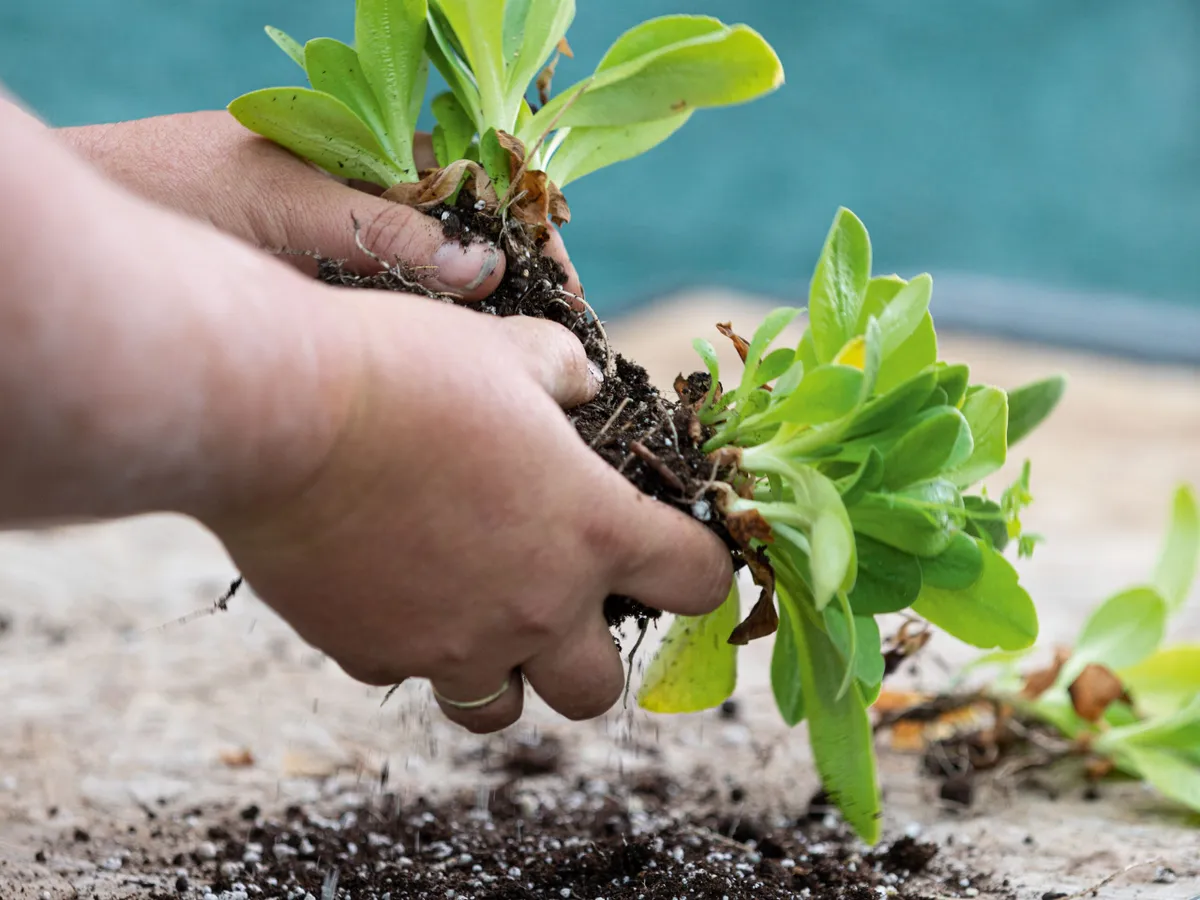
• Split the clumps if necessary or desired and repot. Any offsets can be easily teased off the main root (known on auriculas as the ‘carrot’) and potted up. Always make sure you have a section of both root and leaf to make a viable new plant.
• After division, pot into 7-9cm pots and feed the young plants with a high-phosphate feed to encourage strong root growth.
• Don’t overpot auriculas. This may lead to overwatering, with roots sitting in wet compost, when they need excellent drainage.
Top 16 auriculas to grow
Primula auricula ‘Cuckoo Fair’
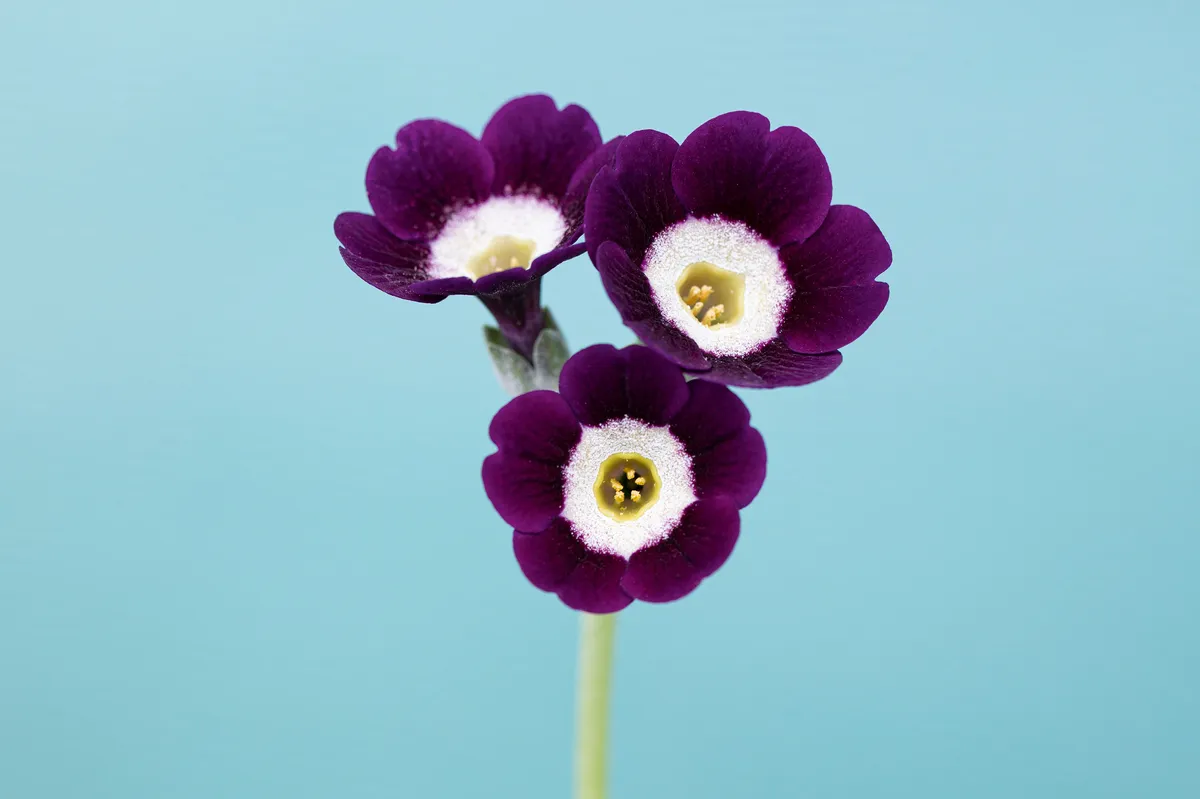
One of the Self group of auriculas that are the closest to the original auricula species, with petals of just one clear colour. Easily damaged and best grown in show pots. Bred by Pop’s Plants in 1996, it has deep-purple flowers and tall upright stems. 15-20cm. RHS H5, USDA 3b-9b.
Primula auricula ‘Weirdo’
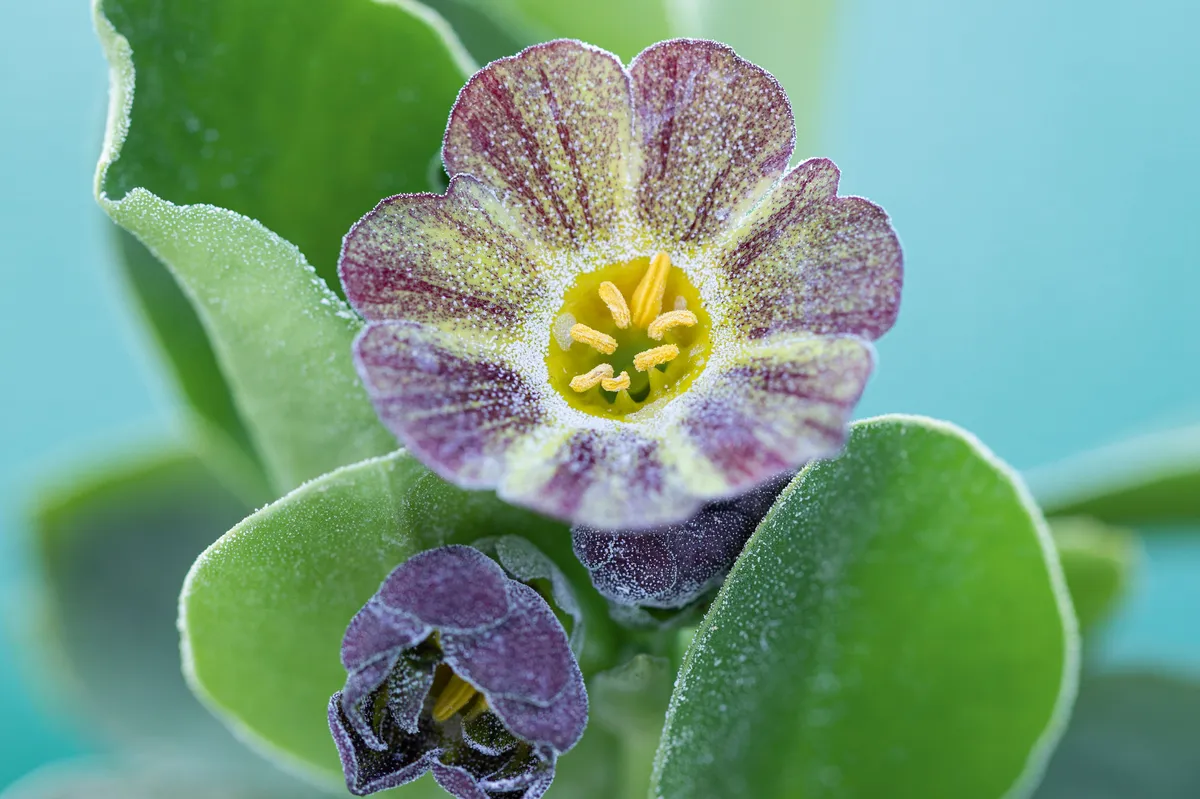
Another from the Stripe group, this is an unusual form with lightly dusted, purple and lemon stripes. An often variable but handsome plant. 15-20cm. RHS H5, USDA 3b-9b.
Primula auricula ‘Gild Green’
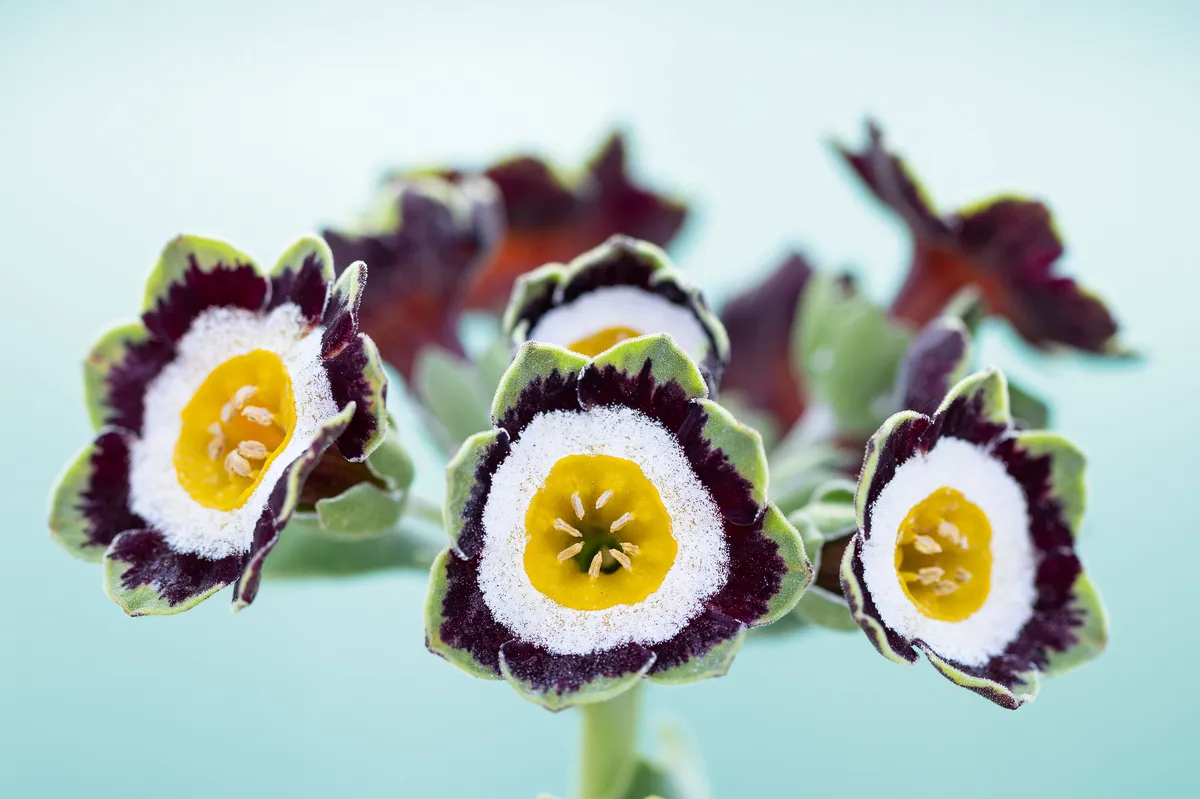
One of the Edge group of auriculas, which are distinguished by having an unusual edge to the flower petals. In this case flowers have a black body with a green edge. The cultivar name is thought to be an abbreviated version of ‘Geldersome Green No.2’, bred by Jack Ballard in 1970, and so-called because the original plant flowered, was named and then died. 15-20cm. RHS H5, USDA 3b-9b.
Primula auricula ‘Arwen’

A plum-red cultivar that belongs to the light-centred alpine group that are strong growers and well-suited to growing in open borders. Petals fade from a dark colour to a lighter shade. One of a series named for Lord of the Rings characters, bred by John Radford. 15-20cm. RHS H5, USDA 3b-9b.
Primula auricula ‘Devons Road’

A Fancy type of auricula, technically the rejects of auricula breeding (those that didn’t fit in with the stringent rules of the other groups were categorised as Fancy). It has a purple body and a thick white edge, and was bred by Henry Pugh in 2006. 15-20cm. RHS H5, USDA 3b-9b.
Primula auricula ‘Strand’
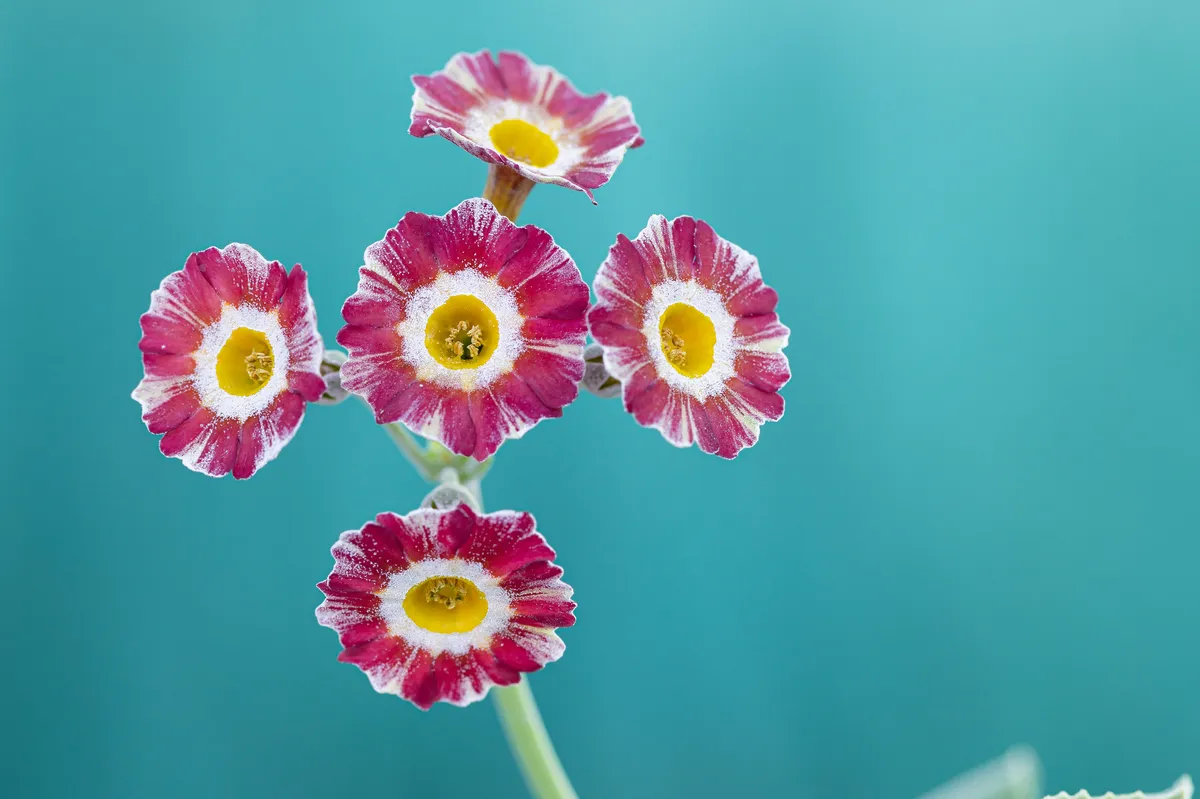
A Stripe type with flowers that have stripes of red, bronze and white and the powdery markings known as farina on the petals. It was bred by Henry Pugh in 2003. 15-20cm. RHS H5, USDA 3b-9b.
Primula auricula ‘Stripey’
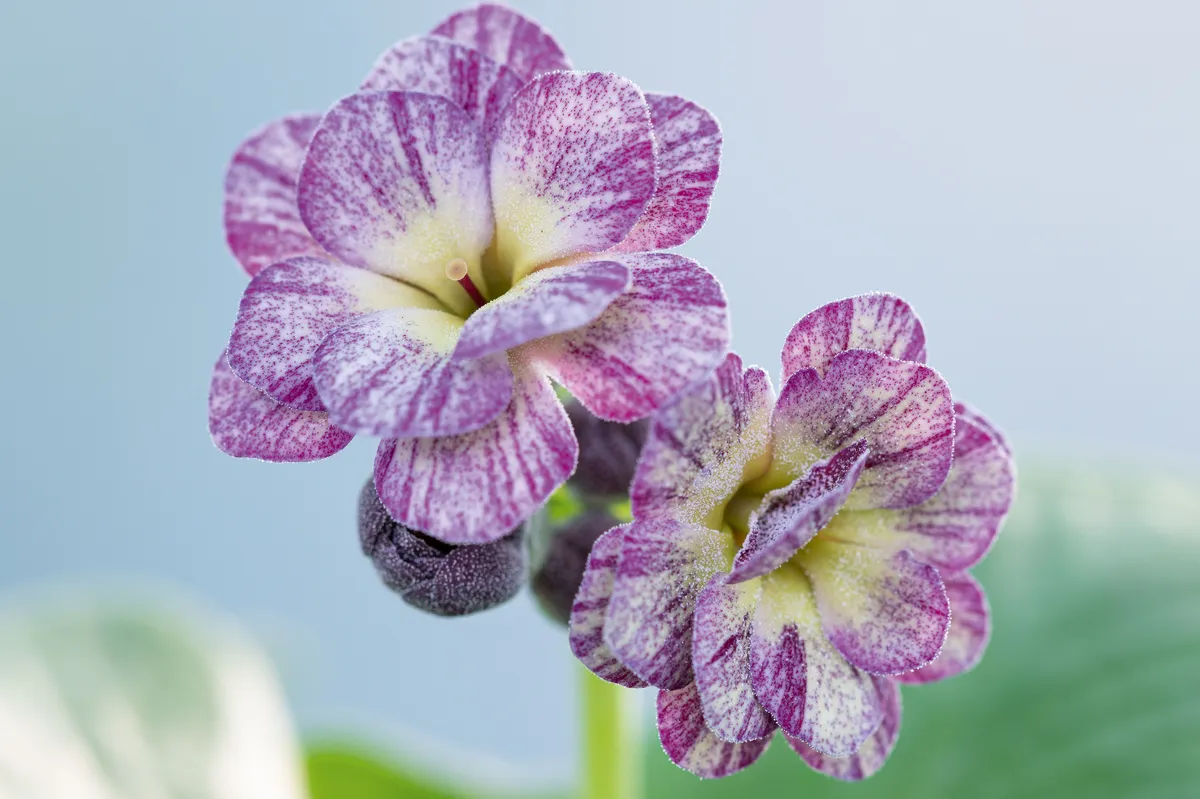
An unusual Double auricula with small, finely striped mauve and cream flowers. Unusually for a Double auricula, it shows an open centre. 15-20cm. RHS H5, USDA 3b-9b.
Primula auricula ‘Sandhills’
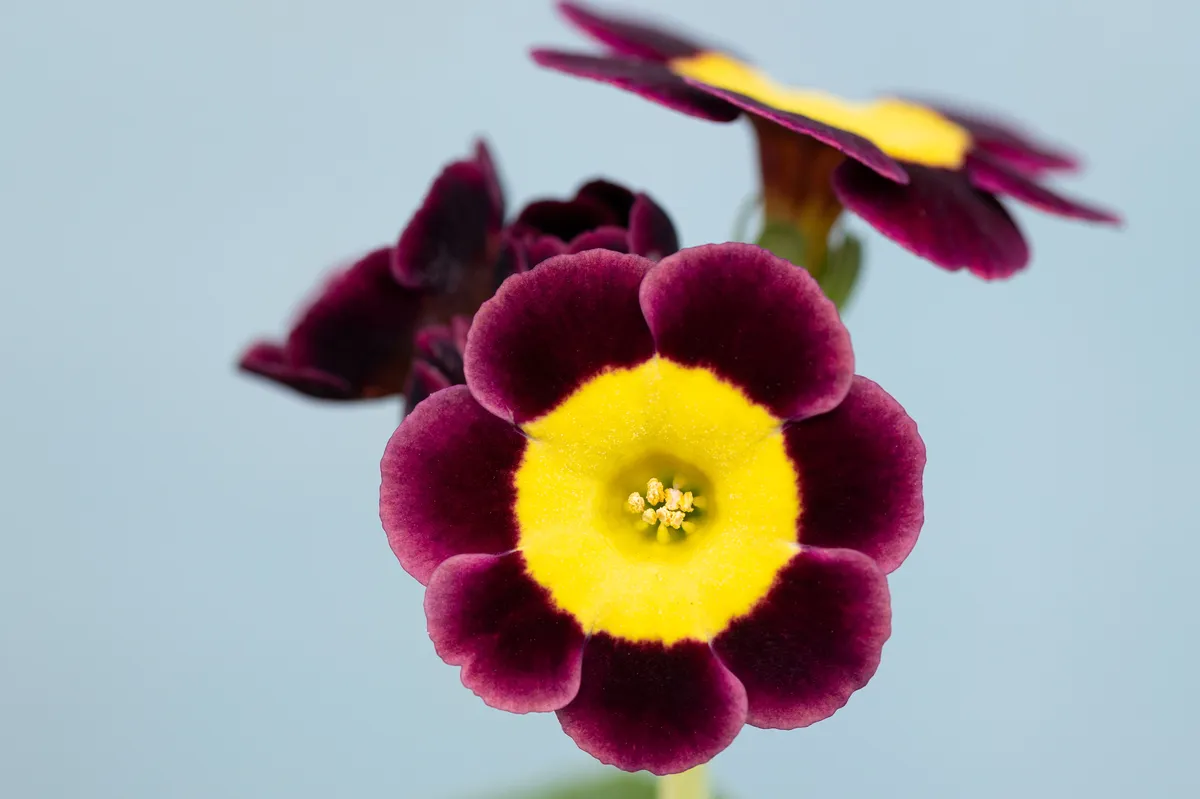
A floriferous, gold-centred alpine with flowers that are dark maroon with a narrow edge. A seedling of P. auricula ‘Sirius’, it was bred by Arthur Delbridge in 1989, and named after a local sand quarry near the raiser’s home. 15-20cm. RHS H5, USDA 3b-9b.
Primula auricula ‘Woottens Ragged Canary’
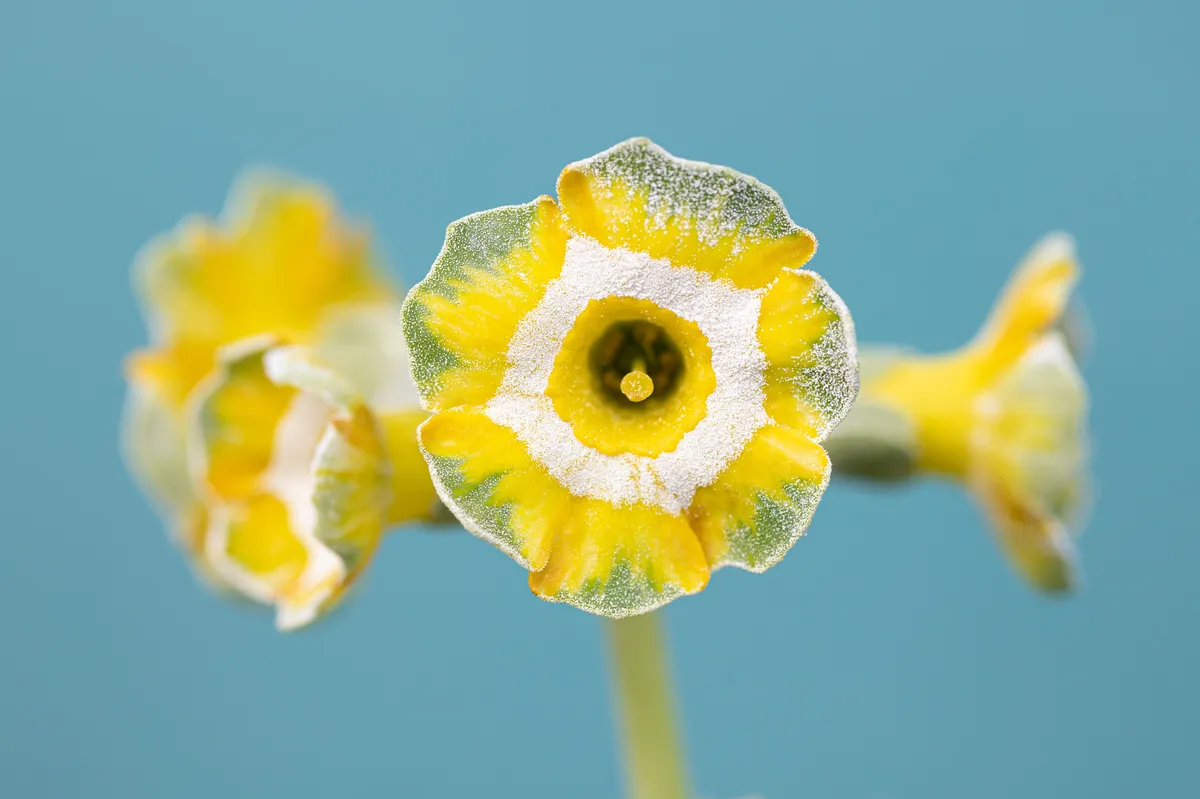
Another Fancy type, this one bred by Woottens in 2008. Lightly fragrant, it has attractive multi-coloured flowers that are yellow with a green edge. 15-20cm. RHS H5, USDA 3b-9b.
Primula auricula ‘Woottens Advent’
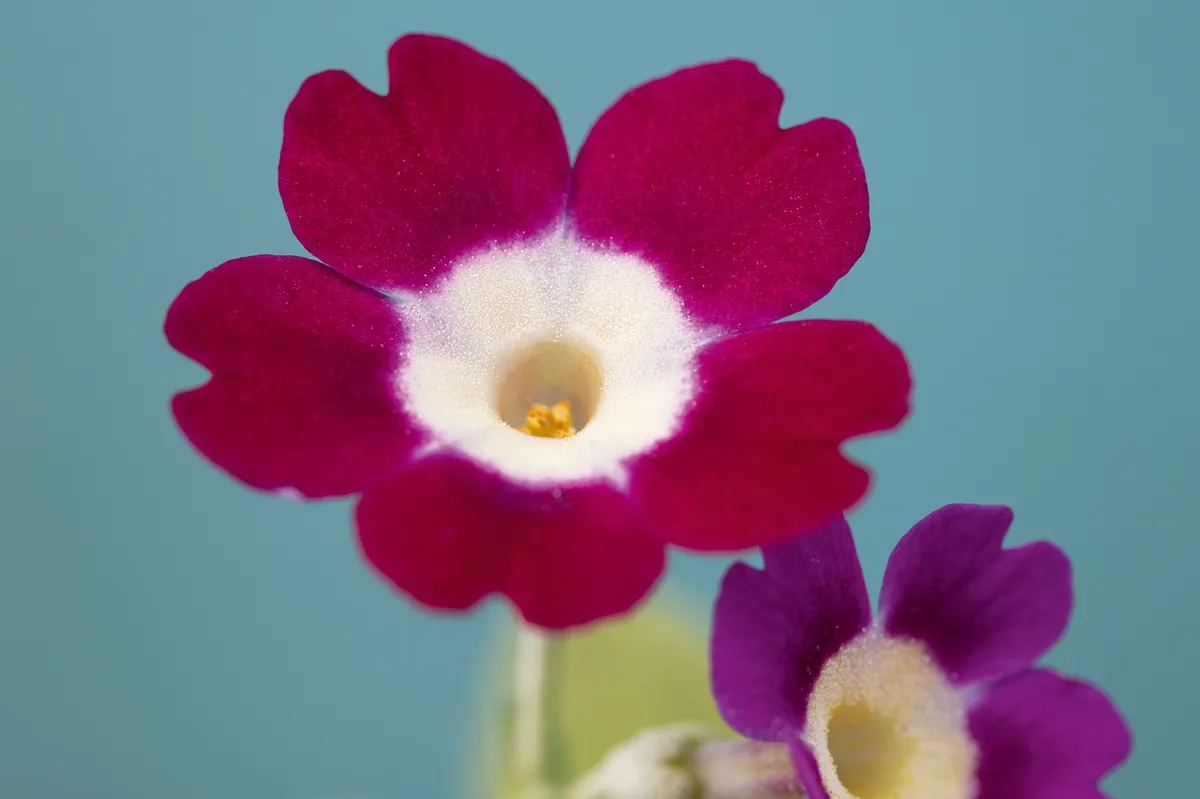
A Border type bred by Woottens in 2008. A cross between Primula auricula ‘May’ x Primula auricula ‘Old Yellow Dusty Miller’, it has soft purple flowers. 15-20cm. RHS H5, USDA 3b-9b.
Primula auricula ‘Minty’

A purple cultivar, with pale, mint-green stripes from the Stripe group, one of the oldest categories. Bred by Derek Parsons in 2006. 15-20cm. RHS H5, USDA 3b-9b.
Primula auricula ‘Brick Lane’
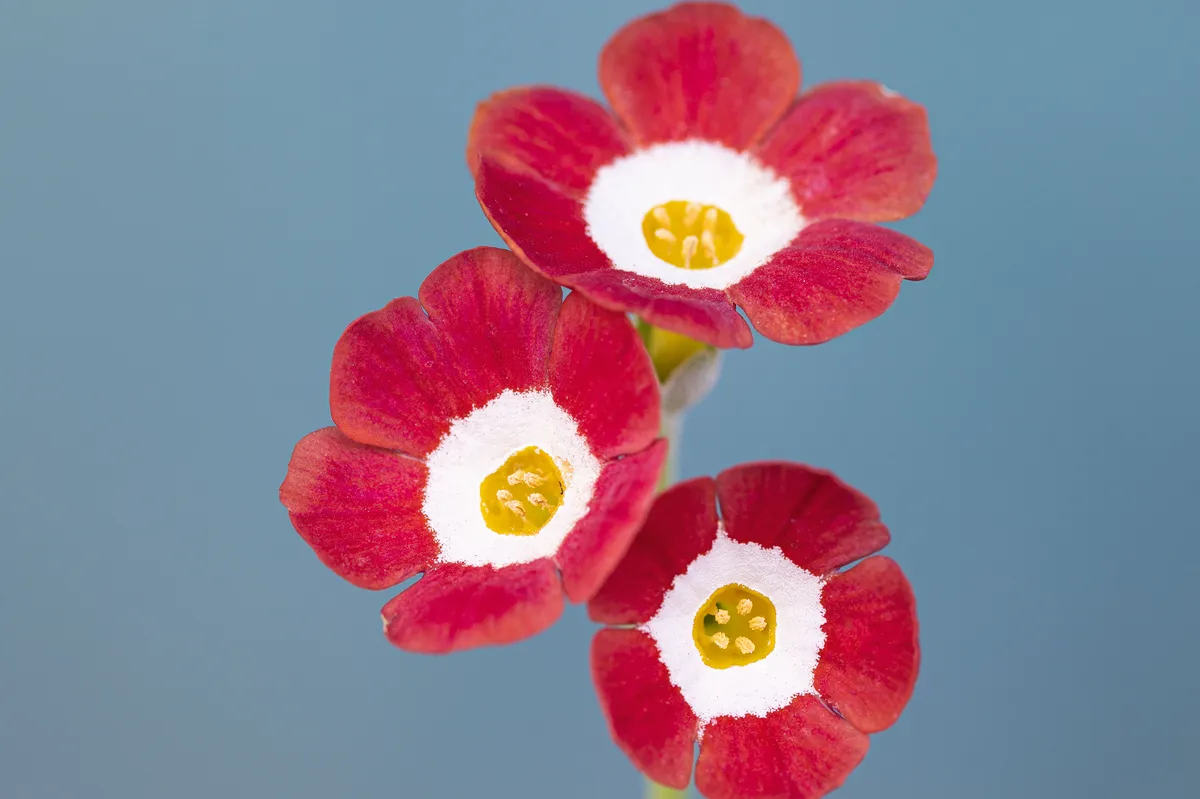
A Self type that has attractive orange-red flowers and was bred by Henry Pugh in 2009. 15-20cm. RHS H5, USDA 3b-9b.
Primula auricula ‘Voodoo Mama’
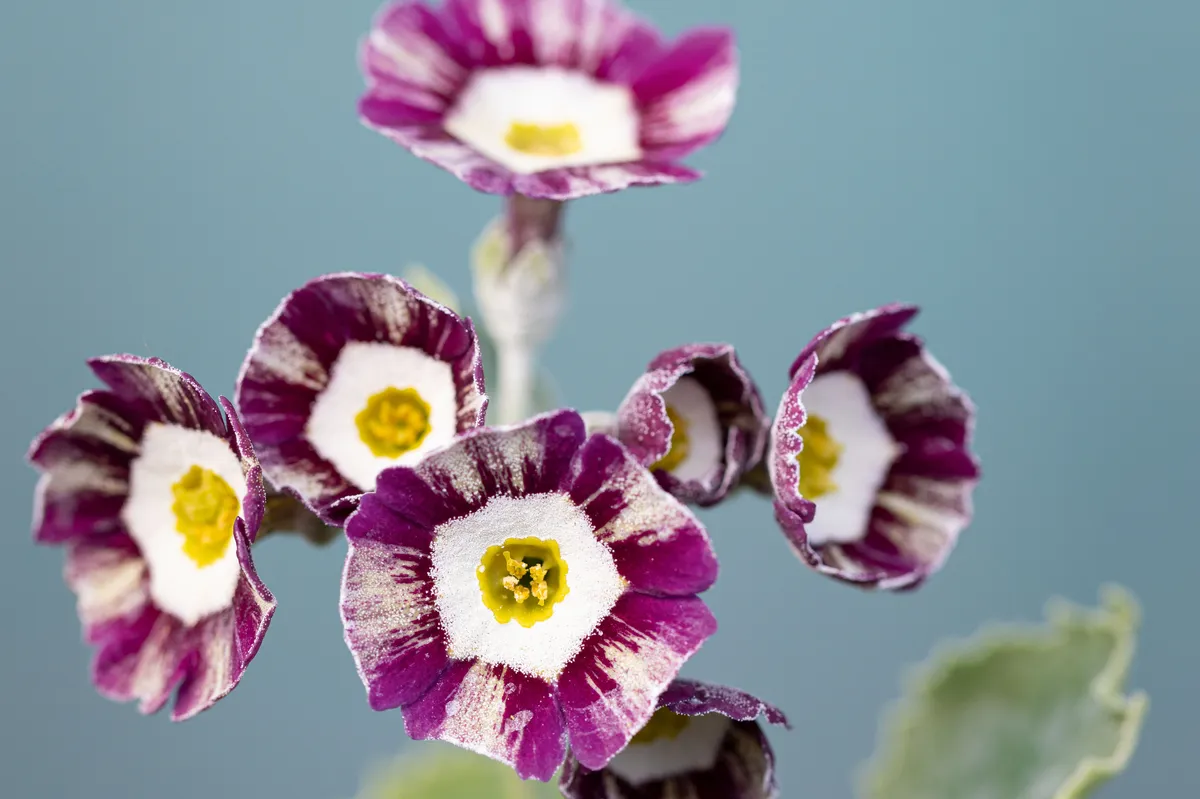
A Stripe type with flowers striped deep and pale purple. Bred by Derek Parsons in 2006. 15-20cm. RHS H5, USDA 3b-9b.
Primula auricula ‘Old Irish Scented’
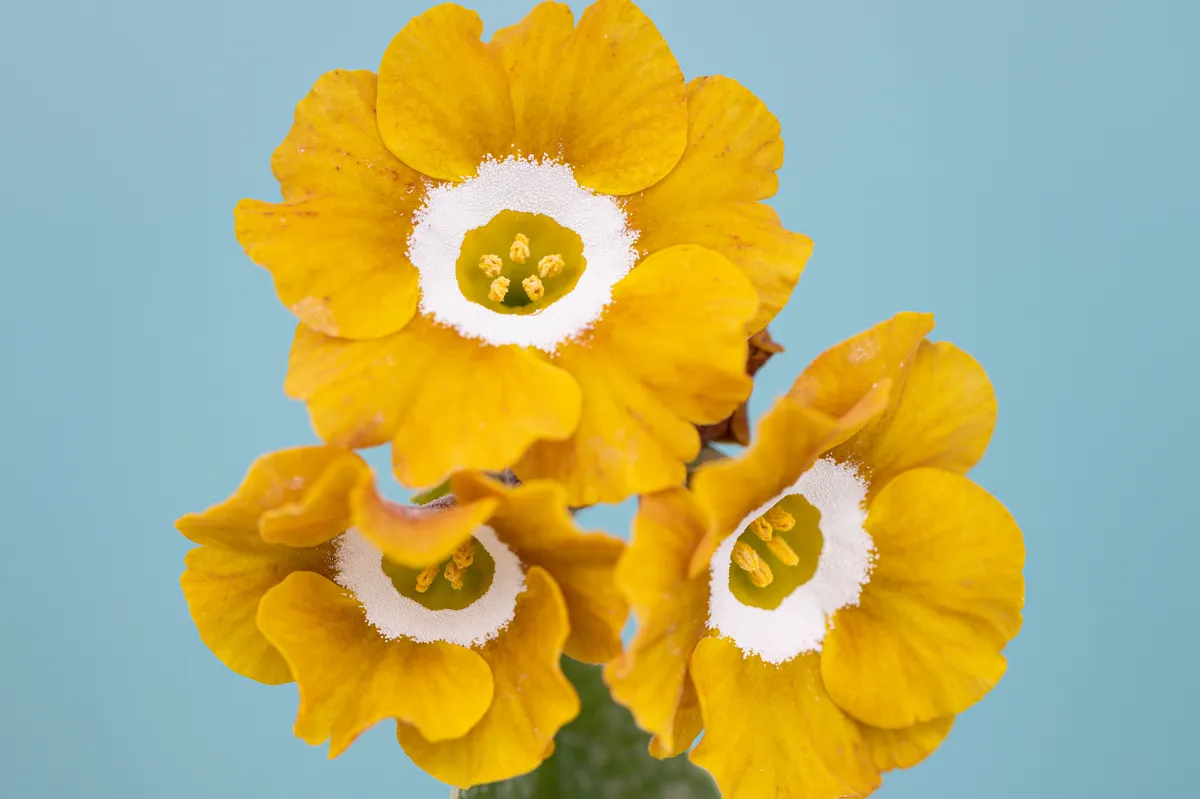
One of the Border group that generally resemble the species Primula hirsuta, although this dusky yellow with a frilled edge is very different in appearance. It was discovered in the gardens of Lissadell House in Ireland. 15-20cm. RHS H5, USDA 3b-9b.
Primula auricula ‘Bright Ginger’

A Self type with striking golden orange colour. Thought to be a Tim Coop seedling, named by Brenda Hyatt in 1997. 15-20cm. RHS H5, USDA 3b-9b.
Primula auricula ‘Helen Barter’
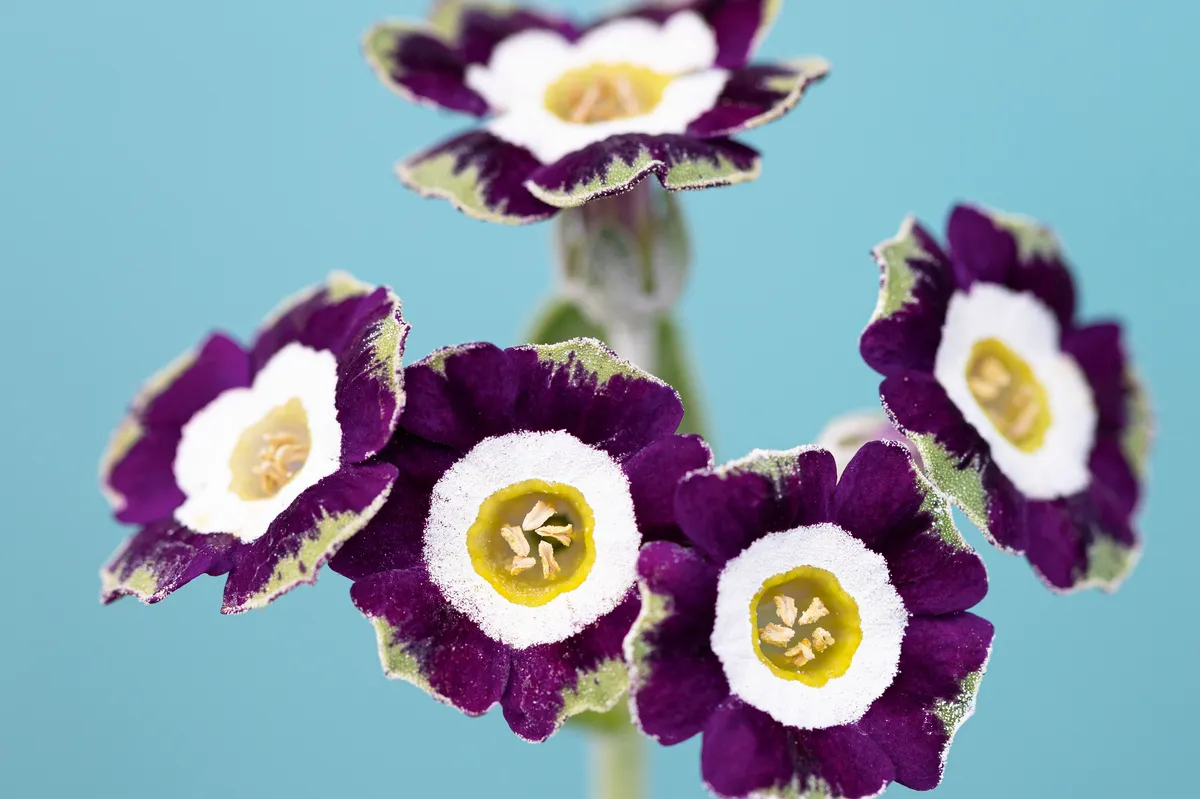
A Fancy type with flowers that have a purple body with a grey-green edge. It was bred in 1988 by R Barter. 15-20cm. RHS H5, USDA 3b-9b.
